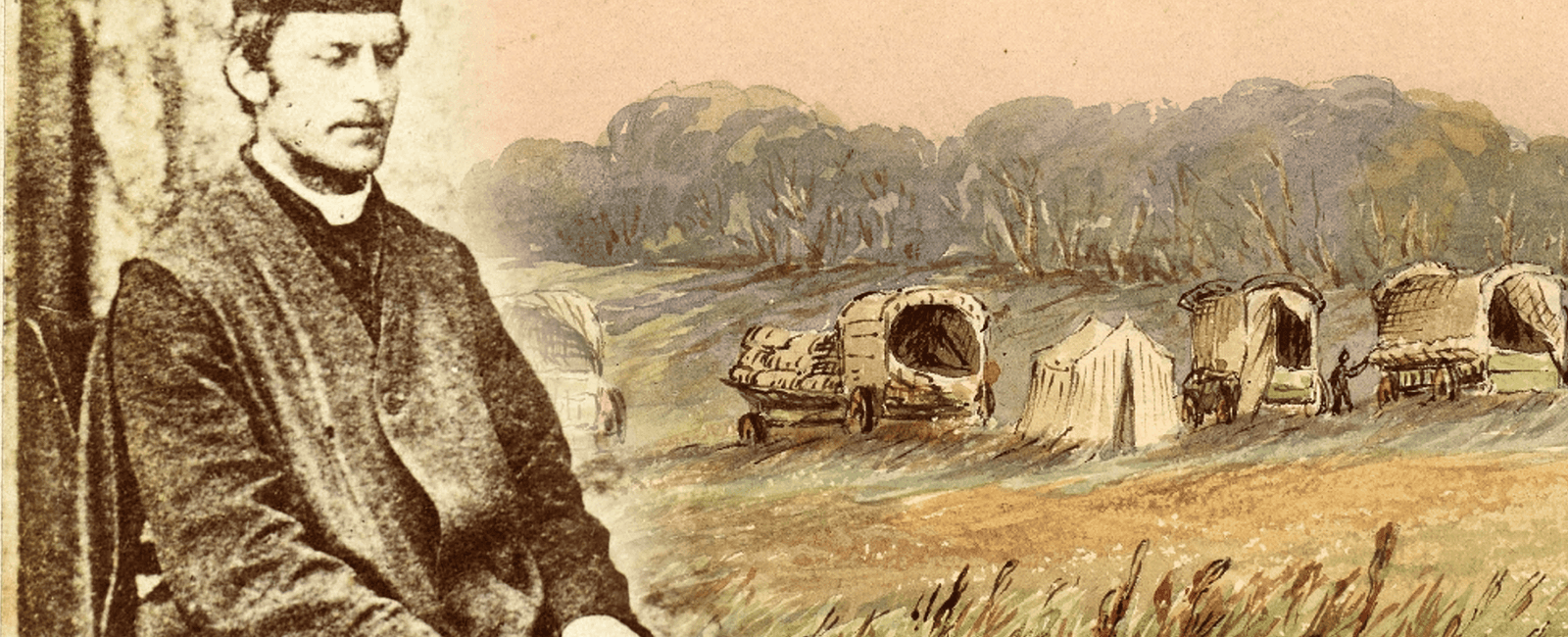From the Oxford Movement to martyrdom in deepest Africa

With the recent digitization of a small number of archives from the Monastery of the Visitation, an interesting collection of items held within are now available for viewing related to the Jesuit missionary Father Law, a convert of the Oxford Movement and his tragic expedition up the Zambesi.

Father Augustus Henry Law, SJ was born in 1833 at Trumpington near Cambridge, the son of an Anglican clergyman. In 1845 he joined the Royal Navy. His uncle Lord Ellenborough was the First Lord of the Admiralty and in March 1846 sailed on the HMS Carysfort bound for the Cape.
In September 1851, his father, inspired by the Oxford Movement and John Henry Newman, was received into the Catholic Church, followed by his children. Upon Augustus’s return to England in April 1852, he too converted, being received by Bishop Grant of Southwark. In 1852 he left the Navy and decided to pursue a vocation to the priesthood, entering the Jesuit noviciate in January 1854, taking simple vows in January 1856.
In 1859 he left Stonyhurst College, Lancashire for the newly established College of St. Aloysius, Glasgow, and then in 1862 went to St. Bueno’s where he was Ordained 24 September 1865. In October 1866 Fr. Law first went out on missionary work, in the West Indies, though he was recalled to England in October 1871, where he spent time in Blackpool and Scotland.
In 1879 the Jesuits were planning a missionary expedition through central Africa up the Zambesi, and in April, Fr. Law set sail for Grahamstown. Upon his arrival, the party began travelling in four wagons, drawn by 58 oxen. They travelled across the Great Fish River, towards Kimberley, stopping at Cradock and Colesberg, before arriving on 11 May and continuing the 21st of May. They crossed the Limpopo River, reaching Shoshong on the 23rd of July, though the Wesleyan London Missionary Society, who had occupied the town and who had the support of the local King, refused to allow the Jesuits to stay there. Thus, they were forced to continue their journey towards Gubulawayo in Zululand.

At Tatti, having made friends with La Bengula, King of the local region, the expedition remained there for some months. In April 1880, having decided to continue, the party separated, with Fr. Law opting to take one of the wagons 300 miles due east, against the advice of his compatriots and of La Bengula, who warned of hostile tribes in that region. He set out with Fr. Charles Wehl and a couple of lay brothers on 28 May 1880, crossing the Sabi River. Soon the party was ambushed by hostile natives, and regular attacks continued. Fr. Wehl disappeared on 6 August after inadvertently wandering off course and losing the party. Fr. Law decided to abandon the wagon and continue on foot, hiding in the cover of the jungle during daytime and travelling at night.
Upon arrival at a supposedly safe village under Umzila, Brother de Sadeleer left the party to go back and retrieve the wagon but failed to return. Fr. Law and Brother Hedley were captured and held in the village, confined to a small hut, with little food or water, and besieged by rats. They both developed fever and grew weaker and weaker with starvation. Fr. Law died 25 November 1880 and was buried in an unmarked grave. Brother Hedley was himself near death, and eventually his hosts carried him to the village of Sebenal where Jesuit missionaries were known to be. It was described that his entire body was covered with sores and ulcers, and his wounds were filled with vermin. Brother de Sadeller had been rescued and nursed Brother Hedley. Father Wehl had also been found wandering delirious, and died shortly afterwards.

Lawrence Gregory
Lawrence Gregory is the NINS senior archivist and UK agent, and a historian of nineteenth-century English Catholicism, who also enjoys cats and steam trains.
Topics
Newsletter
QUICK LINKS

